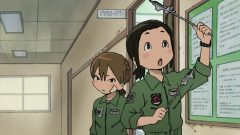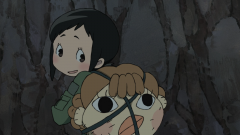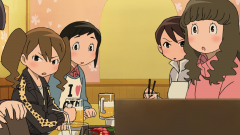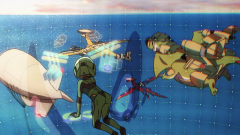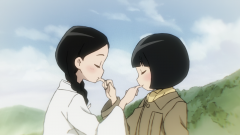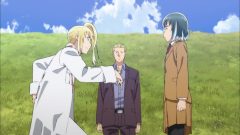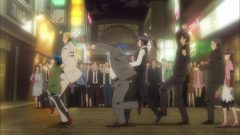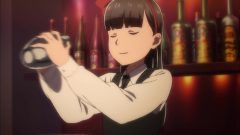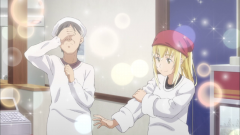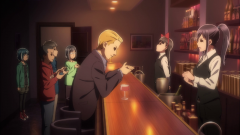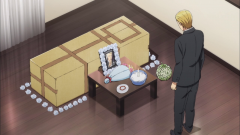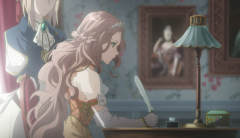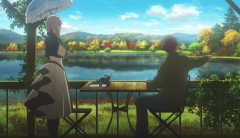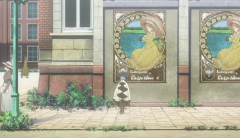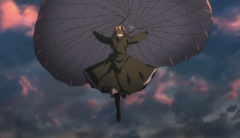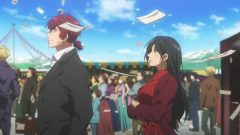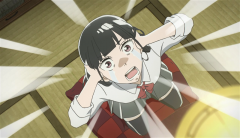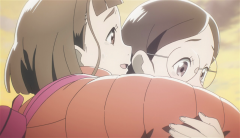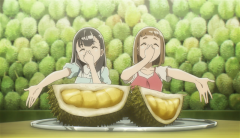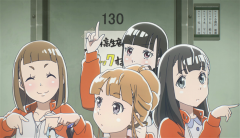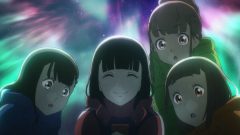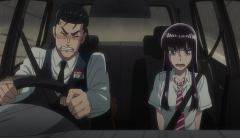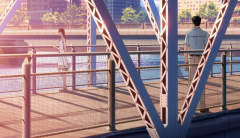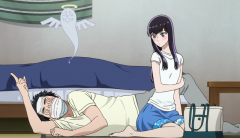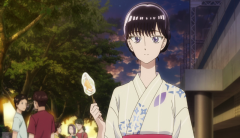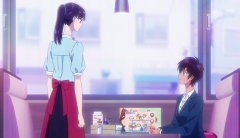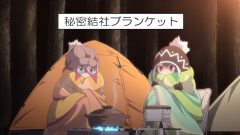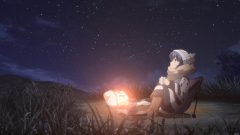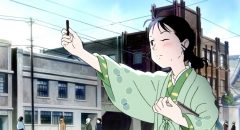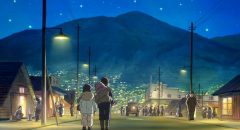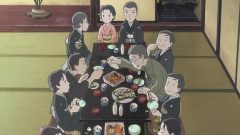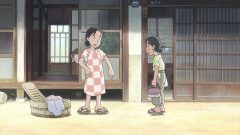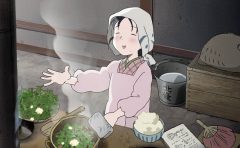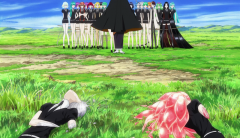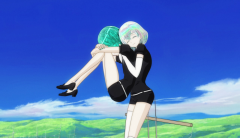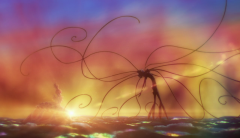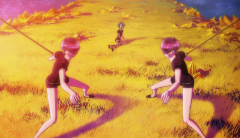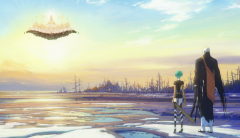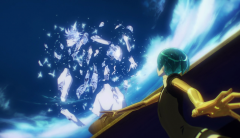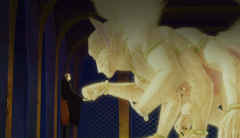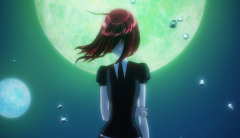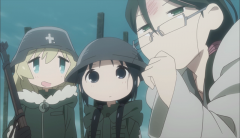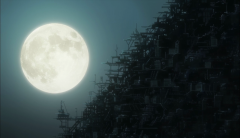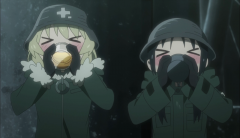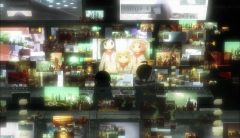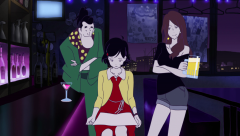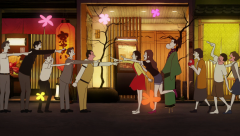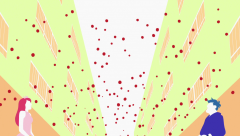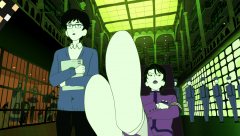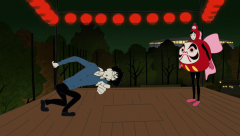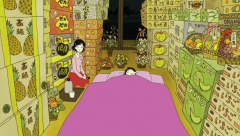Coming off as one of my most anticipated anime out of this last Spring Season, based solely on staffs involved alone – after all, an original anime written by Mari Okada and produced by Bones (which I regarded as one of the best anime studio working right now) – I can’t help but feel let down towards how HisoMaso progresses and wraps up. It’s a show with many highlights, mind you, as I consider the production as one of the best of the year so far: simple yet expressive character designs, stunning backgrounds and crisp animation. All you could ask for really. It has some interesting ideas, but that precisely pains me even more that the world-building just doesn’t support the ideas HisoMaso has.
To begin with, let’s address my main issues regarding this production. Unlike other anime shows which bring themselves down by treading the same tired path, HisoMaso is a show with many fresh concepts. I would applaud anyone who can think of the idea of them inside the dragons and piloting (note: not riding) as a military fighter jet. It’s a wonderful and whimsical mix concept that fit into the easy-going tone and the simple character designs. In fact, the first few episodes still carry this concept forward due to the fact that it never takes itself seriously. That’s when the issue arises when we need something more substantial when the appeal wears out, and it becomes increasingly frustrated to see the plot progresses without any backup. As an example, the show introduces the whole “ritual” concerning the whole giant dragon which “wakes up” every 82 years. It opens a whole new can of worms regarding the whole village who dedicated themselves solely for this event and even the process of it all. Equally under-developed and underwhelmed is the anastomosis bit, which for me is the prime example of creating conflicts solely for the sake if conflicts. As it stands, HisoMaso often feels like a first draft on a novel, many wonderful ideas but all of them are half-baked because the creators just don’t spend enough time to think this through.
The half-baked approach spread into the characters themselves. These girls have many quirks that distinct them to the rest of the cast, but at the end of the day there simply isn’t much development for them, or the development feel calculated and forced. Take Kinutsugai and Hitomi, the D-pilots who appear at the poster and the ED, HisoMaso just doesn’t know what to do with them. Same thing regarding the dragons, which feel more like mascots. The main lead Hisone embraces what could be the worst tendency of HisoMaso’s attempt of developing characters. Like the show, she tends to tell us out loud what her issues are, and like the show she tends to make rather weird decisions. Many of her conflicts are raised and solved within an episode, as a result the development doesn’t feel earned.
Speaking about making weird decisions, I can’t still put my fingers on the central message of HisoMaso. In some ways, Mari Osada underlines the struggles of working women in Japanese society, as they have to choose between career and family. Having Hisone and Hoshino fall in love that could potentially cause negative impact on piloting the dragons is part of that strategy. But how do they deal with it? By having the entire army unit work on “make them fall in love then crush their love apart”. That’s mean-spirited to the point of stupidity. On that note, they didn’t resolve the love’s conflict thoroughly either. Second, HisoMaso marks the relationship between the dragons and their pilots, as we see in how Hoshino struggling as she considers herself “a pilot” – not dragon caretaker; and we see the theme reflected by the titular characters. But the problem with its is the way Hisone regards her dragon. She considers Masotan as someone who see the specialness in her, and piloting dragon is something that make her worthwhile, as a result in episode 3 we have something as obscure as her demanding Masotan to “take responsibility” because he picked her. That level of dependence repeats later on, when Hisone argues with another girl solely about a boy. This questionable treatment to women is unacceptable, especially with a show about adult women written by an adult woman. As a result, HisoMaso become the first show from 2018 that receive a minus (-) mark from me.
But what HisoMaso makes up for the under-cooked story is the sheer power of visual presentation. Everything looks great, the characters are on the simple design, but that’s exactly why the studio can go wild on their facial expressions and characters movement. What it’s lack from the character depth is replaced by their mannerism, in which each character moves differently and has different tones. The background designs are simply gorgeous with bright color palette, and the animation are crisp and a feast to an eye. If you don’t mind the lack of deeper layer, HisoMaso’s aesthetic alone would serve as a visual treat. Indeed, at top of my mind only the recent FLCL’s production is on the same level with this show for the first half of this 2018 calendar year.
So yeah, HisoMaso is a show with many highs and lows. Its visual strength is amongst the best of the industry right now, and it’s an easy watch all around with some emotional resonance. The lack of a well thought-out world, however, hurts the show since it’s crumble as it moves along. It’s still a show worth checking out, but don’t delve too deeply into it.

